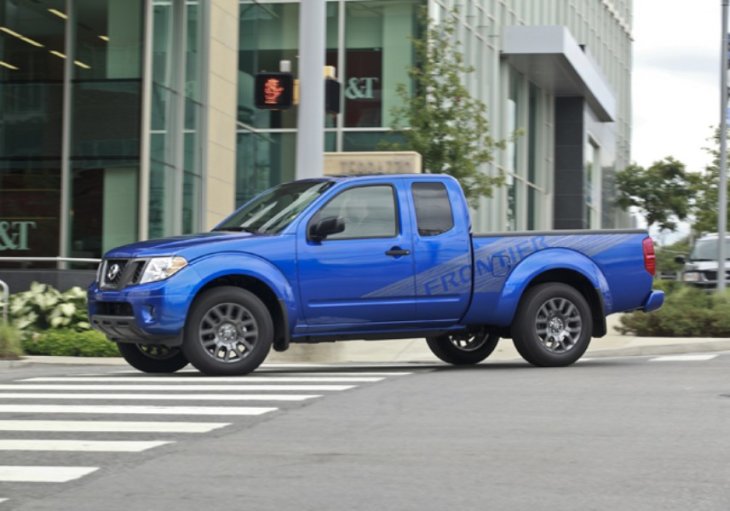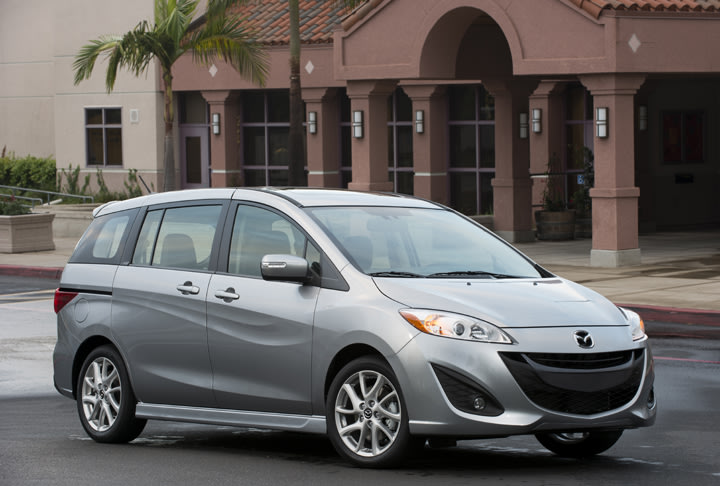
In a first, Americans will likely buy more crossovers than midsize sedans this year — unseating the 4-door car as the default vehicle of choice. The crossover has become the family wagon equivalent of today, with hybrids and compacts SUVs expanding as the cars of choice for young singles, couples and families.
A long list of other model types now find themselves in the less-visited areas of new car dealerships. These vehicles that once drew enough buyers to justify new engineering now represent the endangered species of the auto industry. Some are in decline, others nearly defunct, and a few, sadly, may never return. Here are ten automotive species struggling to survive in the 2010s:

Compact and regular-cab pickups: The Ford Ranger, a truck that had been a top 10 seller throughout the 1990’s, is defunct, while nearly all remaining compact competitors like the Nissan Frontier are scheduled to become larger, longer, and wider. Size now dominates the pickup market, so much so that even regular cabs (those that seat two) are becoming difficult to find at new car dealerships. (The new Chevy Colorado pickup is two feet longer than the last-generation Ford Ranger.)

Conversion Vans: These wooly mammoths of the automotive world were once rolling showcases of American kitsch and luxury. A living room on wheels with a fold-down bed was often crowned with artwork and interior decor that were (cough! cough!) highly personalized. Higher gas prices, loaded up minivans, and the popularity of compact RV’s have all helped decimate this once rolling piece of Americana.
Two-door compacts: Although the Kia Forte, Scion tC and Honda Civic coupe have largely helped this segment maintain a minimal presence, the days when nearly every compact vehicle offered a two-door alternative are long gone. A four-door model these days can look just as sporty as a two-door version, which means that the lesser practicality that comes with two fewer doors is losing ground in the marketplace.
Luxury Coupes: A similar story here. Audi, BMW, Cadillac, Mercedes and other prestige brands continue to offer two-door versions of their sedans in North America — but these models tend to add few sales, with the exception of sport variants like the BMW M4. With the average age of the new car buyer remaining at over 50 for this entire decade according to IHS Automotive, a smaller and less practical luxury vehicle is a tough sell. European automakers have even gone so far as to start building sleeker versions of their sedans, but calling them "coupes" even though there's two pairs of doors.
Near-Luxury Coupes: This trend has trickled down to the near-luxury market where the two-door luxury car is arguably extinct. Once affordable and overwhelmingly domestic near-luxury coupes such as the Ford Thunderbird, Mercury Cougar, and Chevy Monte Carlo have all gone the way of the dinosaurs. The Toyota Camry Solara and Nissan Altima Coupe are defunct as well; with Hyundai just announcing it would end the Elantra coupe, the Honda Accord remains the sole semi-sporty survivor.
Manual transmissions in non-sporty cars: A decade ago you could get nearly any popular car you wanted with a stickshift. Now the opposite is true: Automatics and CVTs have become standard in nearly all vehicles with the exception of a few entry-level models, base model compacts, and sporty vehicles, and manuals are found in less than 5 percent of vehicles sold. (This is a global trend: Even in Germany, most Porsche 911s are sold with automatics.) One big reason: Modern automatics get better mileage ratings, because they can carry more gears and aren't ashamed to hit sixth at 40 mph.
Small Minivans: The Dodge Caravan, Mercury Villager, Nissan Quest and Mazda MPV were once perennial sales successes along with the short wheel-base GM minivans. Today this market is nearly extinct with the Carvan replaced by the Dodge Journey, Mercury now a dead brand, and the Nissan Quest becoming a full-sized minvian. The poor selling Mazda5 is now the only survivor.
V-8 Family Cars: Eight-cylinder family cars used to be the hauler of choice not that long ago. Even in this prior decade, the Ford Crown Victoria and Mercury Grand Marquis remained a viable alternative for those dwindling few seeking that old school, rear-wheel drive, V-8 daily driver. Today it’s virtually impossible to find an affordable family car with a V-8 for less than $35,000, with the Dodge Charger RT offering new car buyers the only non-police vehicle for that price.
Base Models: A stripper model used to be a common sight at car dealerships when loan terms were between two to three years and credit was tight. Now, thanks to seven-year loans and lenient credit standards, most consumers are finding that they can get a long list of options for their vehicles at minimal extra cost. Base models have become far less popular as a result.
Orphan Cars: Specifically, defunct brands, which are now becoming a common sight at dealer auctions where unloved and unwanted vehicles can spend months on end waiting for consumer demands to change. Orphan cars are quickly becoming an endangered species because fewer consumers are shopping with those extinct brands in mind. Saturn, Oldsmobile, Pontiac, Suzuki, Saab, and many others have become the dodo birds of recent times. Some models, such as the Saturn Aura and Pontiac Torrent, now routinely sell for thousands less than their mechanically identical stablemates who have brands with a far stronger market presence.
LINK







